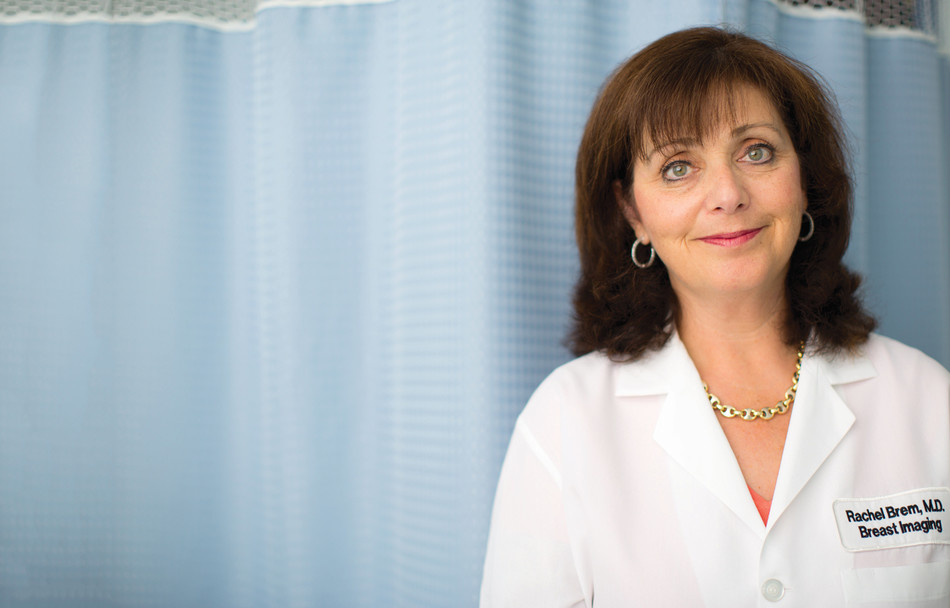How AI Helps Doctors Spot Tumors, and Other Advances in Breast Cancer Care
In No Longer Radical: Understanding Mastectomies and Choosing the Breast Cancer Care That’s Right for You, radiologist Rachel Brem ’84VPS, director of breast imaging and intervention at the George Washington University Medical Center, provides women with information they need to make important decisions about prevention and treatment.
There have been a lot of books written about breast cancer. What made you and your coauthor, surgeon Christy Teal, decide it was time for another one and that you were the ones to write it?
We have a unique perspective. We’re both caretakers of people who have had breast cancer, we’re both physicians who have spent our careers dedicated to breast cancer, and we’ve both been in the shoes of those who most need to read this book. Christy had a prophylactic mastectomy, a preventative procedure that removes one or both breasts for high-risk women. I had what I thought would be a prophylactic mastectomy but turned out to be treatment for an existing tumor.
Our goal is to empower women and the people who love them with objective information so they can make the best decisions about breast care. The book is not just about cancer. We talk about screening, risk-based care, the implications of having dense breast tissue, and how women can advocate for themselves. The right decisions are going to be different for different people.
There is no consensus among medical organizations and government agencies about the timing and frequency of breast cancer screening. At what age, and how often, do you believe women should get mammograms?
Any woman can develop breast cancer, and breast cancer found early is generally curable. The death rate has gone down by forty-three percent over the past two decades, thanks in large part to regular screening and early diagnosis. Now almost two-thirds of women are diagnosed before the cancer has spread to other parts of the body. Christy and I believe that women at average risk, with no symptoms, should begin getting annual mammograms at age forty.
Women with a genetic or family risk, or those with dense tissue, need more frequent screening. Breast density — determined by the amount of fat versus glandular tissue in the breast — is a strong risk factor for developing cancer. Dense tissue shows up as white on the mammogram, making tumors much more difficult to spot and diagnose. Women with dense breasts need additional screening with MRI or ultrasound. In many states it’s now the law that women be told of their breast density status, and that insurance cover any additional imaging that’s needed.
Unfortunately, the US Preventive Services Task Force (USPSTF), a government agency, recommends that average-risk women screen every other year instead of annually, because they’re worried about the anxiety caused by getting a mammogram that requires additional evaluation. In 2023, we have empowered, educated women who can make decisions as to whether they want to deal with some transient anxiety in order to get a potentially life-saving yearly mammogram. I’m concerned that this recommendation could make the death rate rise again.
Your book discusses preventative mastectomies for high-risk individuals. Isn’t this surgical procedure considered an extreme intervention?
In the BrCa community — women who are or were at higher risk of developing cancer due to genetics — breast removal surgery, while drastic, is recognized as life-saving. Christy and I are both in this group. The fear of waking up every day worried about breast cancer, or having lived your life losing many family members to the disease, can make having a preventative mastectomy sound very reasonable. Still, many with the BrCa gene mutation choose to focus on surveillance instead, with the goal of spotting the cancer early. Both choices are valid, depending on the individual.
The breast cancer culture now in the United States is, like so much of medicine, focused on being as minimally-invasive as possible. That’s okay, but as physicians, Christy and I want high-risk women to know that if they do decide to keep their breasts, they will have to live with a higher risk of developing cancer. It’s not that we’re pro-mastectomy, but that we want to present a balanced and honest picture of the short and long-term consequences of one’s decision.
The number of prophylactic mastectomies is increasing in the US. Do you think that’s because doctors are recommending the surgery more? Or because more women are having genetic testing and genetic counseling?
I think it’s about women taking control of their lives. Women who have genetic mutations predisposing them to breast or other cancers often come from families that have been deeply impacted by cancer. My mother had breast and ovarian cancer and I wanted to change my own narrative. I think the ability to alter the trajectory of a family who knows cancer so well is very empowering and emancipating.
Your book asserts that artificial intelligence (AI) might be able to remedy some of the racial disparities in breast care and cancer survival rates. Can you explain how that might happen?
In my practice at George Washington University, we evaluate every mammogram using AI. We not only find more cancers, but we find cancer earlier. Humans get tired, humans miss things, well-meaning physicians miss things, and AI helps that.
Most mammograms in the United States, especially those performed in underserved communities, are read by general radiologists, but we know that specialized radiologists do better. AI can help the performance of a general radiologist be as good as a subspecialized breast imager. Integrating AI into rural practices or underserved communities that have general radiologists could help bring their care up to the level of subspecialists. That’s very exciting.




